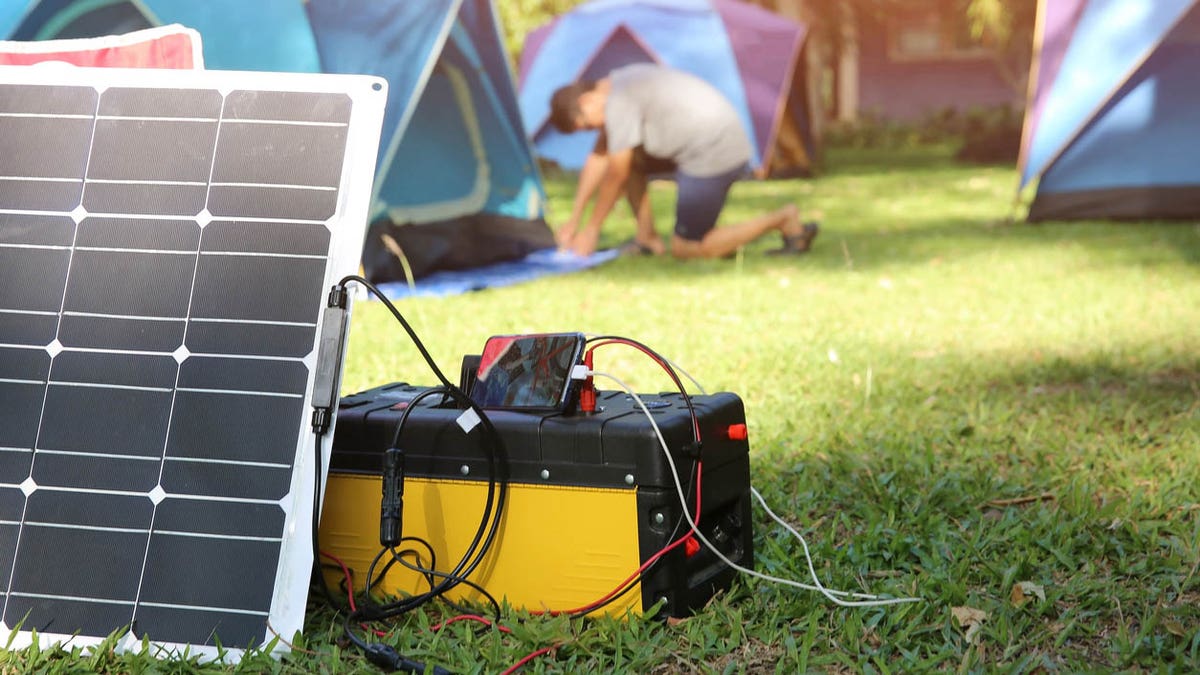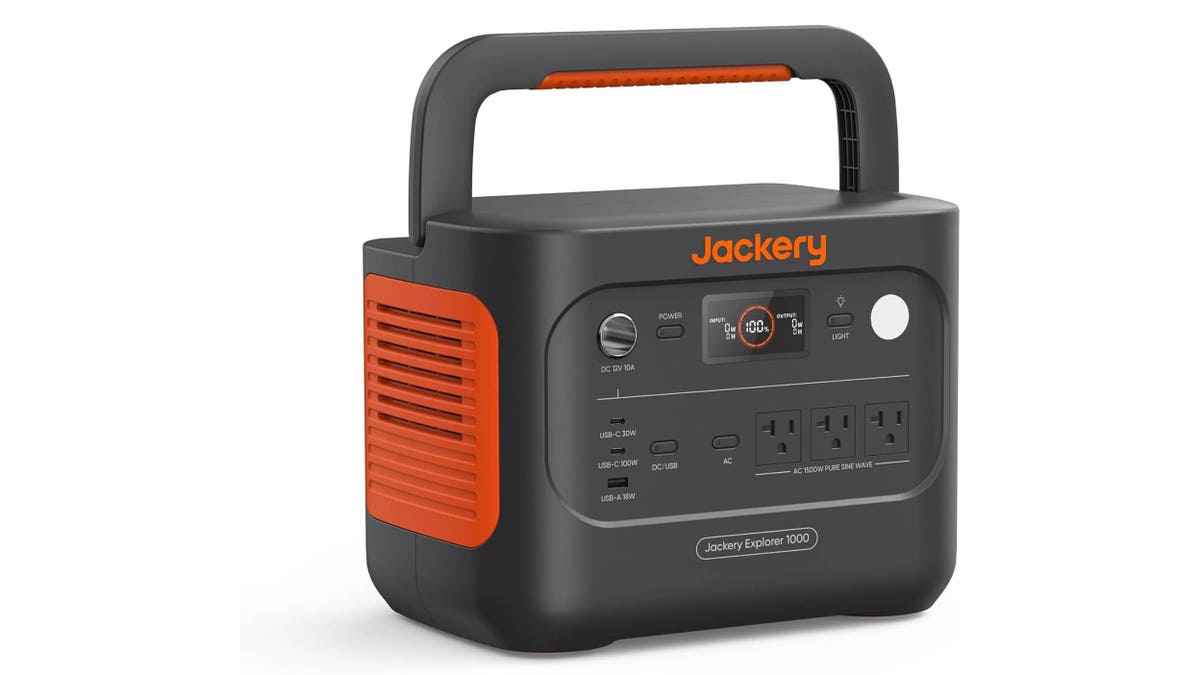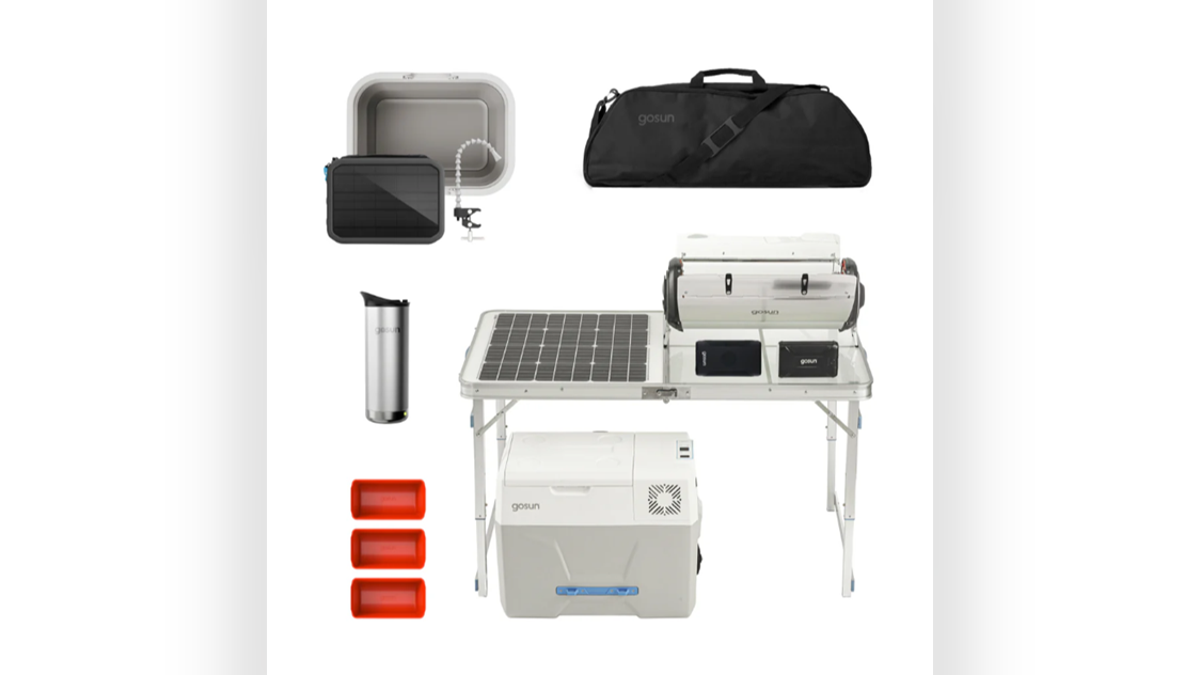Campers Turn to Solar-Powered Gear to Stay Off Grid and Cut Emissions
Portable solar batteries, lanterns and shower packs are gaining traction as quiet, emissions-free alternatives to generators for remote camping
Outdoor enthusiasts are increasingly equipping campsites with solar-powered batteries, lanterns and shower packs to stay charged and comfortable without generators, retailers and product listings show. The gear is designed to provide electricity for phones, lights and small appliances while reducing noise and carbon emissions associated with fuel-powered generators.
Manufacturers and sellers say modern portable solar systems combine photovoltaic panels with rechargeable battery packs that can power devices through the night and be recharged the next day. One widely advertised option is a Jackery portable battery that is compatible with solar panels; models range from roughly 300 watts for light use to 1,500 watts that can run multiple small appliances. Retail listings for one Jackery unit showed a discounted price of $474.05 from an original $799, reflecting retailers' seasonal promotions.

Manufacturers describe typical use cases as charging phones and cameras, powering LED lighting, running small coolers and supplying intermittent power for cooking devices or medical equipment. Solar lanterns fold flat and provide several hours of light on a full daytime charge, while solar shower packs use the sun to heat water and rely on gravity or a battery-driven pump to deliver flow. Product specifications generally list battery capacity in watt-hours, panel wattage for charging speed and estimated run times for common devices.

Campers and conservation advocates note environmental and practical benefits. Solar kits operate silently and produce no combustion emissions at the campsite, addressing concerns about air quality, wildlife disturbance and generator noise. The systems also reduce the need to transport and store gasoline, a common logistical and safety challenge for extended backcountry stays.
At the same time, product descriptions and consumer guidance emphasize limitations. Charging speed and the amount of usable power depend on panel size, sun exposure and battery capacity. Overcast weather, dense tree canopy and short winter days can significantly extend recharge times. Users must also weigh the additional weight and bulk of batteries and panels against their energy needs; larger-capacity systems that power refrigerators or electric cooking devices tend to be heavier and more expensive.

Retailers recommend matching system capacity to planned usage: smaller panels and batteries for phone charging and lighting, larger units for running heaters, refrigerators or medical devices. Some systems include built-in inverters to supply alternating-current outlets; others provide direct-current USB outputs for mobile devices. Buyers should also consider features such as waterproofing, integrated charge controllers and compatibility with third-party panels.
Market observers say the outdoor recreation sector has seen steady interest in portable solar as manufacturers offer a wider range of sizes and price points. The combination of improved battery technology and more efficient solar panels has made many products viable for multi-day use in favorable conditions. Consumers, however, are advised to review specifications and testing results for run times and recharge rates to ensure a system meets specific off-grid needs.
As solar camping gear becomes more common, suppliers and safety groups continue to recommend familiar precautions: protect batteries from extreme temperatures, follow manufacturer charging instructions and maintain situational awareness about weather and daylight for recharge planning. The gear is positioned as a quieter, lower-emission option that extends the amenities of modern life into remote settings while avoiding the fuel, noise and emissions of traditional portable generators.